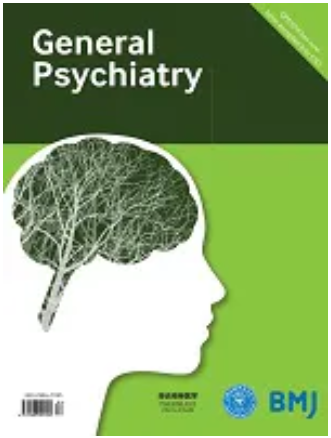Connectome-based predictive modelling can predict follow-up craving after abstinence in individuals with opioid use disorders
IF 5.3
3区 医学
Q1 PSYCHIATRY
引用次数: 0
Abstract
Background Individual differences have been detected in individuals with opioid use disorders (OUD) in rehabilitation following protracted abstinence. Recent studies suggested that prediction models were effective for individual-level prognosis based on neuroimage data in substance use disorders (SUD). Aims This prospective cohort study aimed to assess neuroimaging biomarkers for individual response to protracted abstinence in opioid users using connectome-based predictive modelling (CPM). Methods One hundred and eight inpatients with OUD underwent structural and functional magnetic resonance imaging (fMRI) scans at baseline. The Heroin Craving Questionnaire (HCQ) was used to assess craving levels at baseline and at the 8-month follow-up of abstinence. CPM with leave-one-out cross-validation was used to identify baseline networks that could predict follow-up HCQ scores and changes in HCQ (HCQfollow-up−HCQbaseline). Then, the predictive ability of identified networks was tested in a separate, heterogeneous sample of methamphetamine individuals who underwent MRI scanning before abstinence for SUD. Results CPM could predict craving changes induced by long-term abstinence, as shown by a significant correlation between predicted and actual HCQfollow-up (r=0.417, p<0.001) and changes in HCQ (negative: r=0.334, p=0.002;positive: r=0.233, p=0.038). Identified craving-related prediction networks included the somato-motor network (SMN), salience network (SALN), default mode network (DMN), medial frontal network, visual network and auditory network. In addition, decreased connectivity of frontal-parietal network (FPN)-SMN, FPN-DMN and FPN-SALN and increased connectivity of subcortical network (SCN)-DMN, SCN-SALN and SCN-SMN were positively correlated with craving levels. Conclusions These findings highlight the potential applications of CPM to predict the craving level of individuals after protracted abstinence, as well as the generalisation ability; the identified brain networks might be the focus of innovative therapies in the future. Data are available on reasonable request.基于连接组的预测模型可预测阿片类药物使用障碍患者戒断后的后续渴求行为
背景 在长期戒断后进行康复治疗的阿片类药物使用障碍(OUD)患者中发现了个体差异。最近的研究表明,基于神经影像数据的预测模型对药物使用障碍(SUD)患者的个体预后有效。目的 这项前瞻性队列研究旨在利用基于连接组的预测模型(CPM)评估阿片类药物使用者对长期戒断的个体反应的神经影像生物标志物。方法 108名OUD住院患者在基线时接受了结构和功能磁共振成像(fMRI)扫描。海洛因渴求问卷(HCQ)用于评估基线和8个月戒断随访时的渴求水平。利用CPM和留空交叉验证来识别能够预测后续HCQ得分和HCQ变化的基线网络(HCQfollow-up-HCQbaseline)。然后,在一个单独的异质样本中测试了所识别网络的预测能力,该样本为甲基苯丙胺成瘾者,他们在戒断前因药物滥用而接受了核磁共振扫描。结果 CPM 可以预测长期戒断引起的渴求变化,这表现在预测和实际 HCQ 跟踪(r=0.417,p<0.001)与 HCQ 变化(负值:r=0.334,p=0.002;正值:r=0.233,p=0.038)之间存在显著相关性。与渴求相关的预测网络包括躯体运动网络(SMN)、显著性网络(SALN)、默认模式网络(DMN)、内侧额叶网络、视觉网络和听觉网络。此外,额叶-顶叶网络(FPN)-SMN、FPN-DMN 和 FPN-SALN 的连接性降低以及皮层下网络(SCN)-DMN、SCN-SALN 和 SCN-SMN 的连接性增加与渴求水平呈正相关。结论 这些发现凸显了 CPM 在预测长期戒断后个体渴求水平方面的潜在应用以及推广能力;所识别的大脑网络可能是未来创新疗法的重点。如有合理要求,可提供相关数据。
本文章由计算机程序翻译,如有差异,请以英文原文为准。
求助全文
约1分钟内获得全文
求助全文
来源期刊

General Psychiatry
医学-精神病学
CiteScore
21.90
自引率
2.50%
发文量
848
期刊介绍:
General Psychiatry (GPSYCH), an open-access journal established in 1959, has been a pioneer in disseminating leading psychiatry research. Addressing a global audience of psychiatrists and mental health professionals, the journal covers diverse topics and publishes original research, systematic reviews, meta-analyses, forums on topical issues, case reports, research methods in psychiatry, and a distinctive section on 'Biostatistics in Psychiatry'. The scope includes original articles on basic research, clinical research, community-based studies, and ecological studies, encompassing a broad spectrum of psychiatric interests.
 求助内容:
求助内容: 应助结果提醒方式:
应助结果提醒方式:


